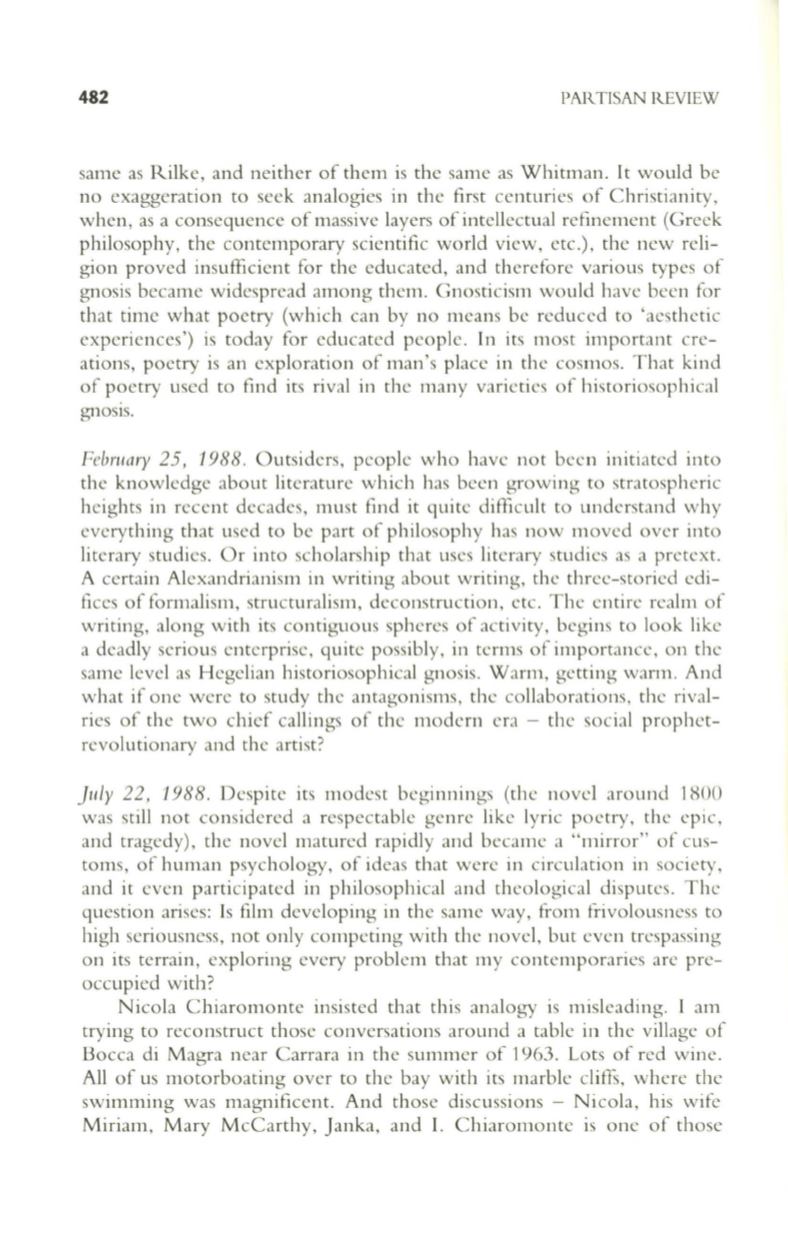
482
PAJUISAN REVIEW
same as Rilke, and neither of them is the same as Whitman.
It
would be
no exaggeration to seek analogies in the first centuries of Christianity,
when, as a consequence of massive layers of intellectual refinement (Greek
philosophy, the contemporary scientific world view, etc.), the new reli–
gion proved insufficient for the educated, and therefore various types of
gnosis became widespread among them. Gnosticism would have been for
that time what poetry (which can by no means be reduced to 'aesthetic
experiences') is today for educated people .
In
its most important cre–
ations, poetry is an exploration of man's place in the cosmos. That kind
of poetry used to find its rival in the many varieties of historiosophical
gnOSlS.
February
25, 1988. Outsiders, people who have not been initiated into
the knowledge about literature which has been growing to stratospheric
heights in recent decades, must find it quite difficult to understand why
everything that used to be part of philosophy has now moved over into
literary studies. Or into scholarship that uses literary studies as a pretext.
A certain Alexandrianism in writing about writing, the three-storied edi–
fices of formalism, structuralism, deconstruction , etc. The entire realm of
writing, along with its contiguous spheres of activity, begins to look like
a deadly serious enterprise, quite possibly, in terms of importance, on the
same level as Hegelian historiosophical gnosis. Warm, getting warm. And
what if one were to study the antagonisms, the collaborations, the rival–
ries of the two chief callings of the modern era - the social prophet–
revolutionary and the artist?
July
22, 1988. Despite its modest beginnings (the novel around 1800
was still not considered a respectable genre like lyric poetry, the epic,
and tragedy), the novel matured rapidly and became a "mirror" of cus–
toms, of human psychology, of ideas that were in circulation in society,
and it even participated in philosophical and theological disputes. The
question arises: Is film developing in the same way, from frivolousness to
high seriousness, not only competing with the novel, but even trespassing
on its terrain, exploring every problem that my contemporaries are pre–
occupied with?
Nicola Chiaromonte insisted that this analogy is misleading. I am
trying to reconstruct those conversations around a table in the village of
Bocca di Magra near Carrara in the summer of 1963. Lots of red wine.
All of us motorboating over to the bay with its marble cliffs, where the
swimming was magnificent. And those discussions - Nicola, his wife
Miriam, Mary McCarthy, Janka, and
I.
Chiaromonte is one of those


